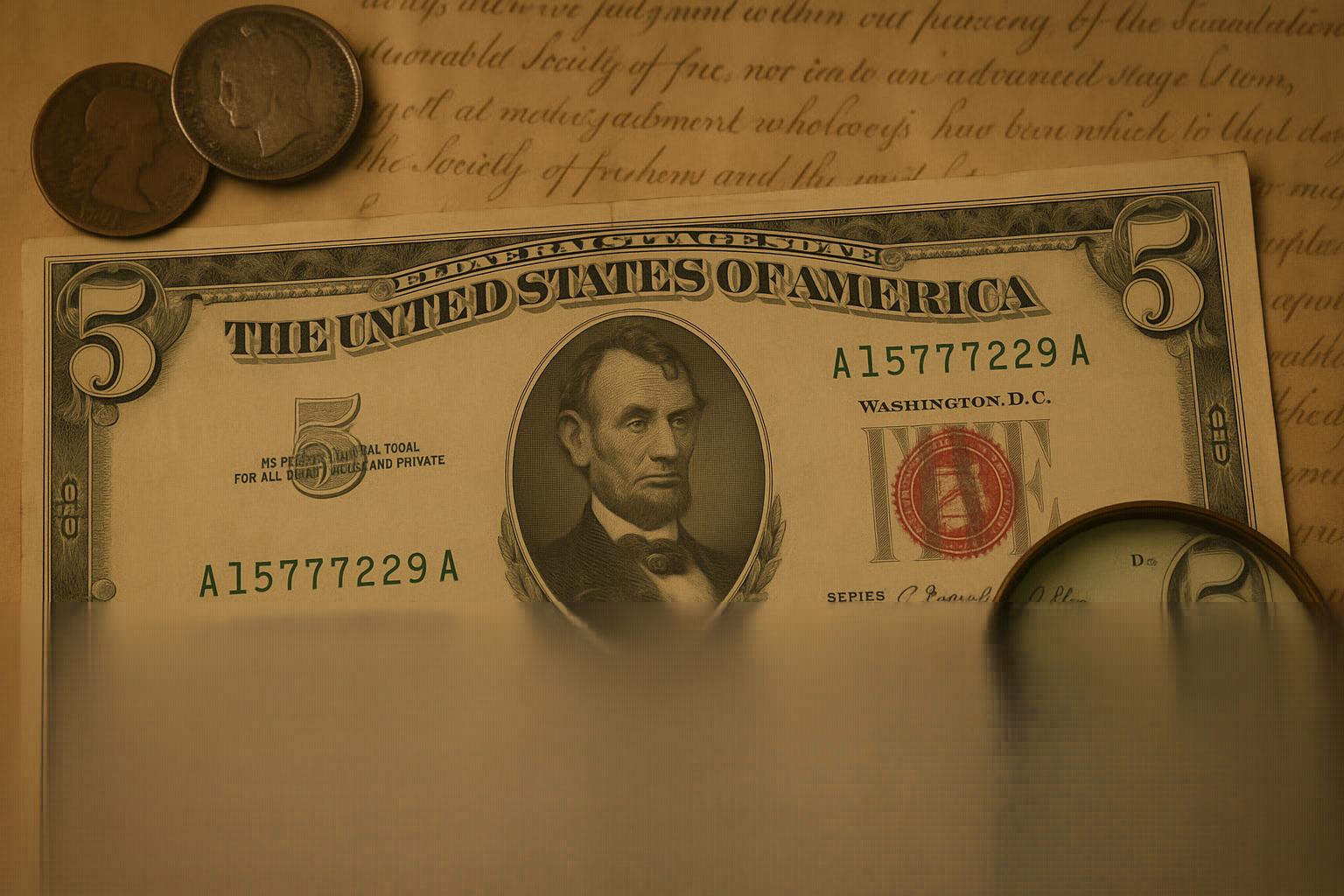Most people see a $5 bill as just another everyday piece of currency. But for collectors, certain $5 bills can be worth hundreds or even thousands of dollars due to their age, rarity, errors, or serial numbers. From Civil War-era notes to modern misprints, some of these bills are considered hidden treasures in the world of U.S. currency collecting.
You may want to check your wallet, safety deposit box, or old family drawers — because that $5 bill might just be a high-value collectible.
A Brief History of the $5 Bill
The first $5 bill was issued in the 1860s, during the early days of U.S. paper money, and featured Alexander Hamilton. It was later replaced with an image of Abraham Lincoln, where he remains today. Over the decades, the $5 bill has appeared in many forms:
- United States Notes (1860s–1971)
- Silver Certificates (1886–1953)
- Federal Reserve Notes (issued since 1914)
- Gold Certificates (issued in early 1900s)
Each version has its own collectible importance depending on the era, condition, and series.
5 Types of $5 Bills That Could Be Valuable
Here are some of the most collectible and valuable types of $5 bills known to date:
1. 1928B $5 Red Seal United States Note
This rare early small-size note features a red seal and unique signature combinations. In pristine condition, it can sell for $500–$1,500.
2. 1934A North Africa $5 Silver Certificate
Issued for WWII military use, these blue-seal notes with a yellow Treasury seal are popular among collectors. Uncirculated examples sell for $1,000+.
3. 1953B and 1963B Star Notes
$5 star notes with short print runs can be extremely scarce, especially with fancy serial numbers. Some sell for $100–$300 or more, depending on rarity and grade.
4. High-Grade Pre-1950 Notes
Older notes (like the 1934 series) in Gem CU66+ condition are highly sought after, especially when certified by PMG or PCGS Currency. These can range from $150 to $1,000+.
5. Modern Error Notes
Even recent $5 bills can have value if they contain major printing errors like misalignments, ink smudges, missing serial numbers, or overprints. These can sell anywhere from $200 to $5,000, depending on the severity and rarity of the error.
Fancy Serial Numbers Can Increase Value
Collectors love unique serial numbers, and a $5 bill with a special one could be worth far more than face value. Here’s what to look for:
- Low Numbers (e.g., 00000005)
- Repeating Digits (e.g., 55555555)
- Palindromes (e.g., 12344321)
- Binary Serial Numbers (e.g., 01010101)
- Star Notes (replacements marked by a star “*”)
Even a modern $5 bill can be collectible if it has the right serial number.
$5 Bill Value Chart
| Type / Feature | Condition | Estimated Value |
|---|---|---|
| 1928B Red Seal | Uncirculated | $1,000 – $1,500 |
| 1934A North Africa | XF – Unc | $500 – $1,000+ |
| 1963B Star Note | Uncirculated | $100 – $300 |
| 1934 Regular Issue | MS65+ | $200 – $600 |
| Modern Error Note | Depends on error | $250 – $5,000 |
Values depend heavily on grade, certification, and rarity.
Where to Find Rare $5 Bills
You might discover rare $5 bills in:
- Inherited currency collections
- Old safety deposit boxes
- Estate sales or antique shops
- Circulation (star notes and errors still show up)
- Garage or drawer finds in older homes
Even if a bill looks worn, if it’s a rare variety or error note, it may still have value.
Conclusion
While $5 bills are one of the most common notes in circulation, certain varieties have become highly collectible and incredibly valuable. Whether it’s a red seal note from the 1930s, a WWII military issue, a modern misprint, or a star note with a unique serial number, the key is knowing what to look for.
So next time you’re handed change, take a second look — that ordinary $5 might be worth hundreds or even thousands.
FAQs
What does a red seal on a $5 bill mean?
A red seal indicates a United States Note, issued directly by the U.S. Treasury (not the Federal Reserve). These are no longer printed.
How can I check if a $5 bill is valuable?
Look at the series year, serial number, seal color, and check for errors or star notes. Certification can help determine value.
Can I still use an old $5 bill?
Yes. All U.S. currency is legal tender regardless of age — but don’t spend it without checking its collectible value first.
